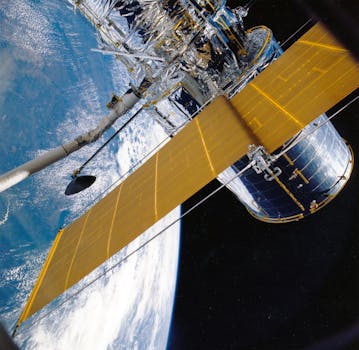GEO Satellites: Understanding the Importance of Geosynchronous Orbit

GEO Satellites: Introduction to Geosynchronous Orbit
GEO satellites, or Geosynchronous Orbit satellites, are a type of satellite that orbits the Earth at an altitude of approximately 36,000 kilometers. At this height, the satellite’s orbital period matches the Earth’s rotational period, allowing it to remain stationary in the sky relative to a fixed point on the Earth’s surface. This unique characteristic makes GEO satellites ideal for a variety of applications, including telecommunications, weather forecasting, and navigation.
GEO satellites have been in use for several decades, with the first GEO satellite, Syncom 2, launched in 1963. Since then, the technology has advanced significantly, with modern GEO satellites offering higher bandwidth, greater power, and more advanced instrumentation. Today, there are hundreds of GEO satellites in orbit, providing a wide range of services to users around the world.
Applications of GEO Satellites
GEO satellites have a wide range of applications, including telecommunications, broadcasting, weather forecasting, and navigation. In the field of telecommunications, GEO satellites are used to provide broadband internet access, mobile phone services, and other forms of communication. They are particularly useful in areas where terrestrial infrastructure is limited or non-existent, such as in remote or rural areas.
In addition to telecommunications, GEO satellites are also used for broadcasting, providing television and radio services to users around the world. They are also used for weather forecasting, providing images and data that help meteorologists predict weather patterns and storms. Furthermore, GEO satellites are used for navigation, providing location information and timing signals that are used in a variety of applications, including aviation and maritime.
Benefits of GEO Satellites
GEO satellites offer a number of benefits, including global coverage, high bandwidth, and reliability. Because they are in a fixed position in the sky, GEO satellites can provide continuous coverage to a specific region, making them ideal for applications that require a high level of availability. Additionally, GEO satellites offer high bandwidth, making them suitable for applications that require large amounts of data to be transmitted.
GEO satellites are also highly reliable, with many satellites operating for 15 years or more. This reliability, combined with their high bandwidth and global coverage, makes them an attractive option for a wide range of applications. Furthermore, GEO satellites are relatively low maintenance, as they do not require the same level of maintenance as other types of satellites.
Challenges and Limitations of GEO Satellites
While GEO satellites offer a number of benefits, they also have some challenges and limitations. One of the main challenges is the high cost of launching and operating a GEO satellite. The cost of launching a GEO satellite can be tens of millions of dollars, and the cost of operating the satellite can be hundreds of thousands of dollars per year.
Another challenge is the limited availability of orbital slots, which can make it difficult to launch new GEO satellites. Additionally, GEO satellites are vulnerable to interference from other satellites and terrestrial systems, which can impact their performance and availability. Furthermore, GEO satellites are subject to the risks of space weather, such as solar flares and cosmic rays, which can damage their instrumentation and affect their performance.
GEO satellites, or Geosynchronous Orbit satellites, are a crucial part of modern satellite communications, offering a wide range of applications and benefits. From telecommunications and broadcasting to weather forecasting and navigation, GEO satellites play a vital role in our daily lives. While they have some challenges and limitations, the benefits of GEO satellites make them an essential part of our technological infrastructure.
Focus Keyword: GEO satellites. As we have seen, GEO satellites are a vital part of modern satellite communications, offering a wide range of applications and benefits. With their high bandwidth, global coverage, and reliability, GEO satellites are an attractive option for a wide range of applications. Whether it’s telecommunications, broadcasting, weather forecasting, or navigation, GEO satellites play a crucial role in our daily lives.

